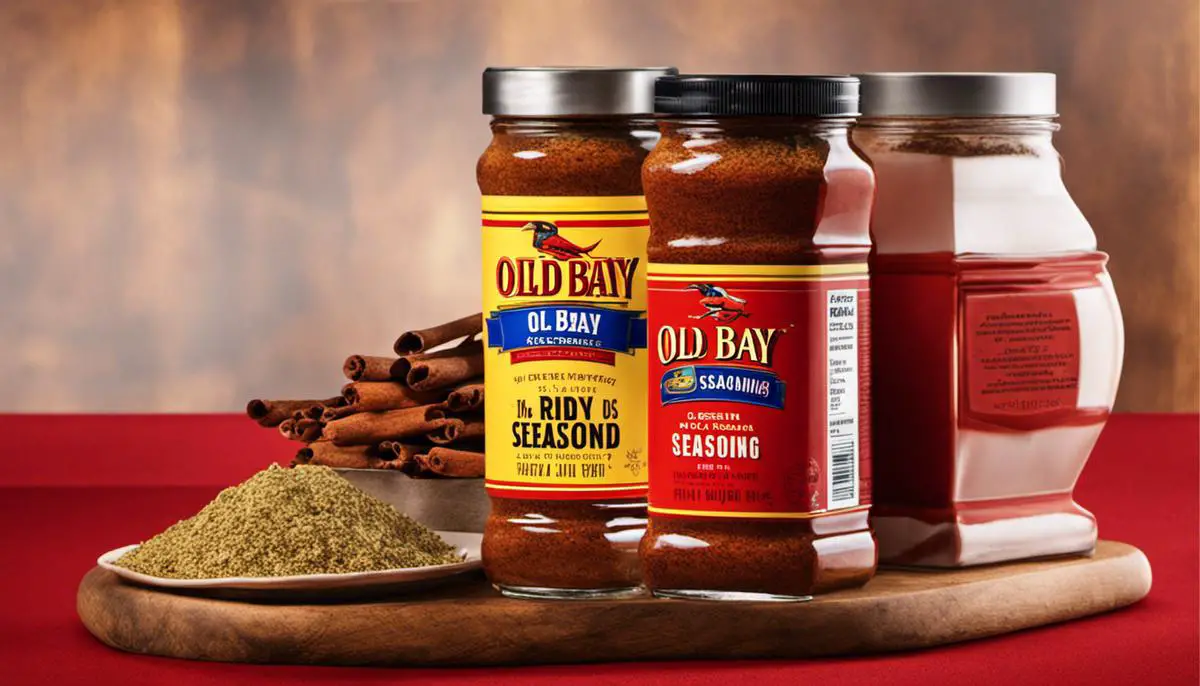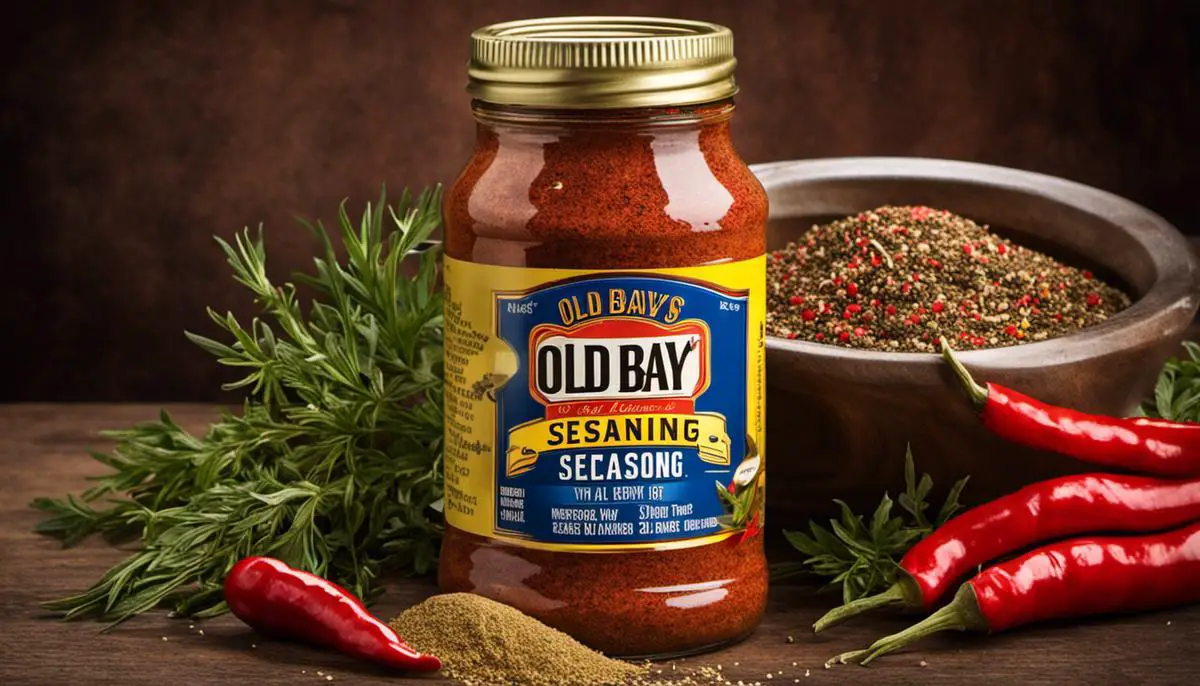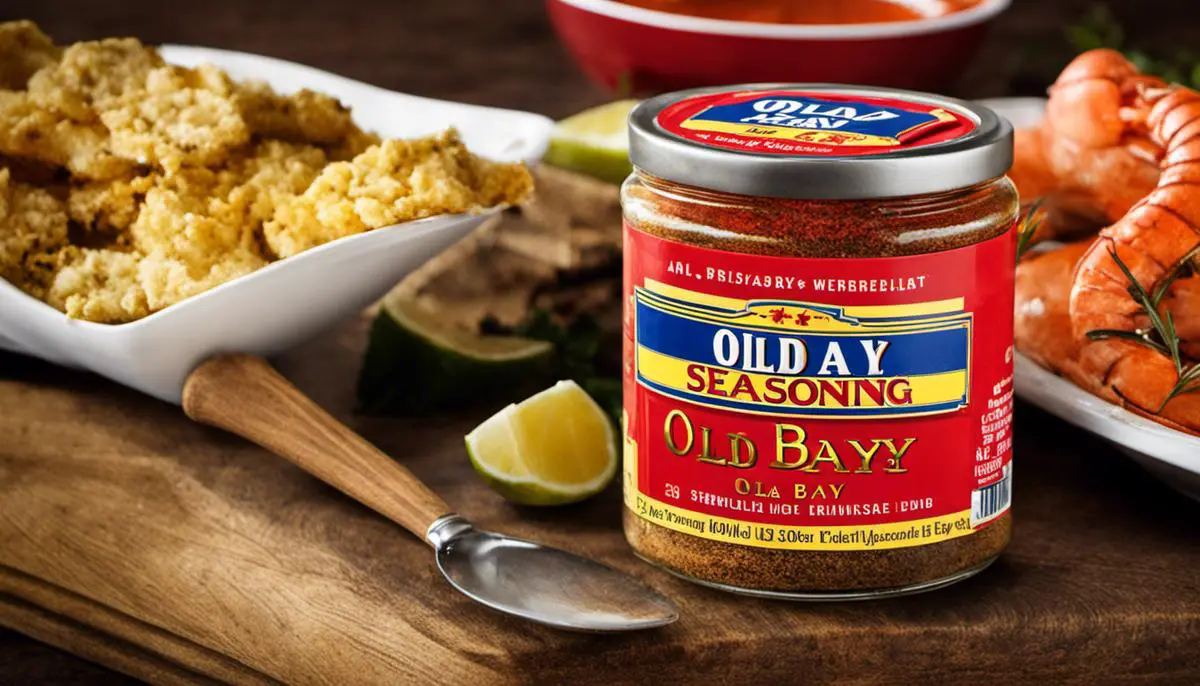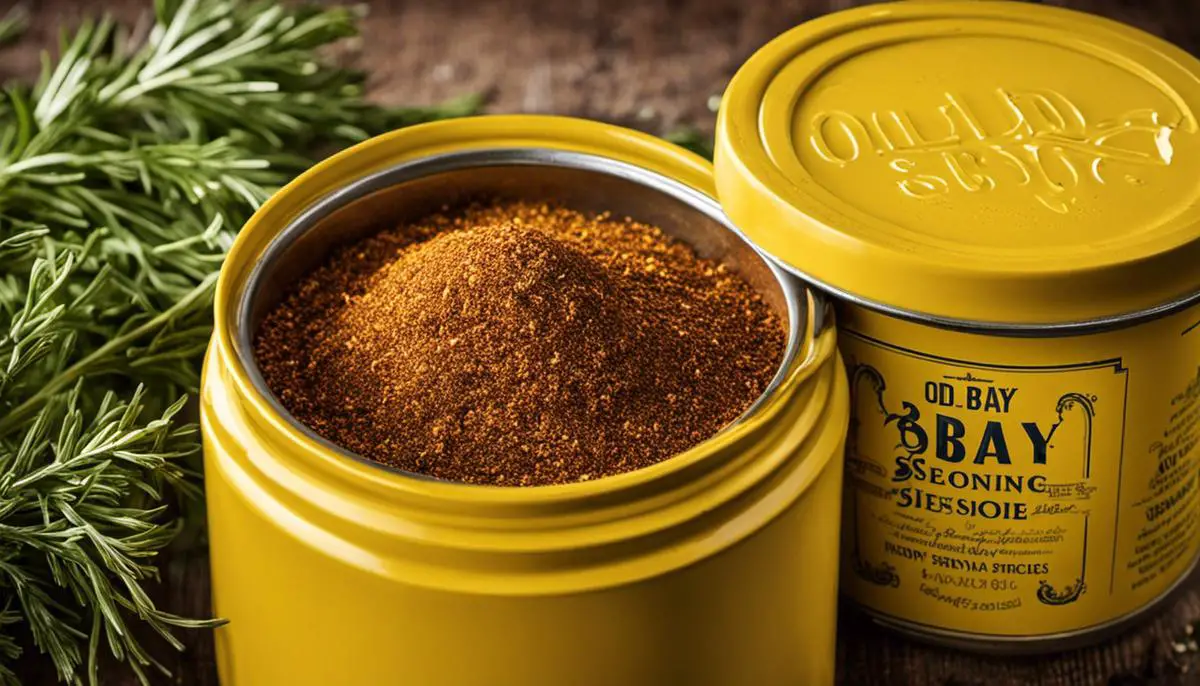Table of Contents
The allure of Old Bay Seasoning lies not only in its distinct flavor, but also in the rich tapestry of its history, ingredients, and culinary uses. Originating in Maryland, this unique blend of spices and herbs has been enlightening palates since its inception, but few delve deep into its storied past or truly understand the symphony of ingredients that create its beloved taste. More than just a seasoning, Old Bay offers various health benefits and can be harmoniously integrated into countless recipes. However, it doesn’t hurt to have an idea of its alternatives, highlighting a dynamic world of flavors awaiting exploration. This exploratory journey uncovers the birth, evolution, and essence of Old Bay Seasoning, a veritable treasure in our spice cabinets.
History of Old Bay Seasoning
Origins of Old Bay Seasoning
Old Bay Seasoning’s roots trace back to the early 20th century in Maryland, USA. Its creator was Gustav Brunn, a Jewish-German immigrant who settled in Baltimore after escaping Nazi Germany. Brunn brought his spice blending expertise to America and began developing what would become the famous Old Bay Seasoning.
Brunn initially created the distinctive seasoning blend for the bustling Maryland seafood market. During that era, the Chesapeake Bay area had an abundance of crabs, and the local population needed a new flavor to spice up their catch. Drawing from his knowledge of spice blends and a desire to create a unique taste, Brunn created what would become Old Bay.
Evolution of Old Bay Seasoning
Traditionally, Old Bay Seasoning has been associated primarily with seafood, particularly crab and shrimp. However, as the seasoning’s popularity spread beyond the Chesapeake Bay area, consumers began experimenting with it in a broader range of dishes. Today, Old Bay is a versatile seasoning used in a variety of cuisines and dishes including poultry, salads, and even cocktails.
The original recipe remains unchanged since it was first developed, proving the timeless appeal of the seasoning. This constant blend of unique flavors and the years of history it carries has made Old Bay a beloved cultural icon in the culinary world.
All about Old Bay Seasoning
The inimitable blend of spicy, savory, and slightly sweet flavors of Old Bay Seasoning is a result of a unique fusion of 18 different herbs and spices. Among these, the key ingredients include celery salt (produced from salt and celery seed), as well as red and black pepper, and paprika, the latter lending the seasoning its distinctively intense color.
Even though Old Bay Seasoning has been on the market for many years, the exact list of its ingredients is still kept under wraps. This enforced secrecy lends an added element of intrigue to its appeal, drawing the continued interest of consumers and culinary enthusiasts alike, thereby augmenting the charm of the seasoning.
While the traditional Old Bay Seasoning recipe remains true to its original formulation, recent years have witnessed an expansion of the product line. Now, there are other variants available such as a lower sodium version for the health-savvy consumers, and a spicier blend for those who prefer a pronounced heat quotient in their food. But no matter the version, every iteration of Old Bay stays true to its signature blend of herbs and spices, infusing every dish it touches with its exclusive essence.

Understanding the Ingredient Profile
Digging Deeper into Old Bay Seasoning Ingredients
Old Bay Seasoning, an iconic blend of herbs and spices, was originally developed in Maryland for use with crabs and other seafood. Over time, it has gained immense popularity, and it now finds its way into a vast variety of dishes, adding a special and distinctive flavor that enhances the taste profile.
Spices and Herbs in Old Bay
The Old Bay ingredient profile is a well-guarded secret, but it is known to contain an array of 18 spices and herbs. Among the main ingredients is celery salt, which is composed of salt and celery seed. Celery salt stands out in the mix, providing a hint of bitterness and a slight trace of earthiness. Additionally, it helps intensify the savory flavors.
Another significant ingredient is paprika. Made from ground dried peppers, it brings both a mild, sweet warmth and a vibrant color to the blend.
Black and red pepper are also utilized in Old Bay Seasoning, providing a kick of heat that is noticeable but not overwhelming. These two types of pepper also contribute to the rich red color of the seasoning.
Mustard is another essential component which brings a tangy and slightly spicy note to the seasoning mix. The exact type of mustard used is not disclosed, but it is speculated that it’s either dry mustard or mustard seed.
Complexity and Layering of Flavors
The remaining ingredients, thought to include bay leaf, nutmeg, cloves, allspice, cardamom, and ginger among others, contribute to the complexity and layering of flavors in Old Bay Seasoning. Each spice and herb brings unique notes that create an overall balanced blend. These components might constitute a lesser portion of the blend, but they are crucial in achieving the distinctive and well-rounded flavor associated with Old Bay Seasoning.
Flavor Profile
The overall flavor profile of Old Bay Seasoning is considered unique due to the unusual combination of ingredients. It’s a mixture of savory, with a hint of sweetness, and a mild level of heat. The complex blend of herbs and spices offer an aromatic and multi-layered flavor experience. This flavorful mix pairs well with a variety of food, not just seafood, making Old Bay Seasoning a versatile ingredient in the kitchen.
The Distinctive Taste of Old Bay Seasoning
Old Bay Seasoning owes its distinctive taste to its unique ingredient profile. The flavor palette of this seasoning is not merely the sum of its parts, but an intricately blended mix where each element works together, creating a harmonious mix. Individual spices and herbs in Old Bay Seasoning meld together to offer a flavor profile that is rich, complex, and hard to replicate, contributing to its enduring popularity.

Health Benefits and Nutritional Value
The Health Upsides of Old Bay Seasoning
Not only does Old Bay Seasoning enhance the taste of dishes, but its mixture of herbs and spices also packs a punch when it comes to health benefits. The primary ingredients include celery salt, paprika, and black pepper. Celery salt combines salt which aids in maintaining the fluid balance in the body, and celery seed known for its antioxidant qualities and potential to help in lowering blood pressure. Paprika, made from ground bell and chili peppers, is replete with several vital nutrients including vitamins E and A, benefactors of healthy skin, eyes, and immune function. The presence of black pepper, rich in piperine, facilitates better nutrient absorption which can boost overall health.
Nutritional Value of Old Bay Seasoning
One of the reasons Old Bay Seasoning is an excellent addition to meals is its low calorie content. A quarter teaspoon serving yields only 0 calories, which allows you to add plenty of flavor to your food without significantly increasing your calorie intake. With no fat or carbohydrates, it’s great for those tracking their macronutrient intake for dietary purposes.
Potential Health Risks
Though Old Bay Seasoning offers various health benefits, it’s important to keep in mind potential health risks, especially for those with existing health conditions. The primary concern is its high sodium content, which can contribute to high blood pressure and cardiovascular diseases when consumed in excess. If you’re on a low-sodium diet, you may want to use it sparingly or opt for the lower-sodium variety.
Why Old Bay Seasoning Should Be In Your Kitchen
If you appreciate a seasoning that combines not just palate-pleasing flavors but also healthy nutrients, Old Bay Seasoning is a noteworthy consideration. The blend of different herbs and spices that make up this iconic seasoning goes a long way to complement your dishes whilst also offering a range of health advantages. Therefore, it can be an invaluable component of a balanced diet.

Using Old Bay Seasoning in Cooking
Decoding the Old Bay Seasoning Formula
Hailing from the state of Maryland, USA, Old Bay Seasoning has etched its name on the culinary world with its unique and flavorful blend of 18 integral herbs and spices. Although the exact recipe remains confidential, the primary ingredients contributing to its distinctiveness are known, and they include celery salt, black pepper, crushed red pepper flakes, and paprika. The list further extends to assume the inclusion of components such as ground mustard seed, mace, cinnamon, cardamom, allspice, and ginger.
Old Bay Seasoning in Seafood Dishes
Old Bay Seasoning is often associated with seafood, thanks to its origin in the Chesapeake Bay area, known for its abundant seafood. The most famous use is in a traditional Maryland crab boil. The seasoning is added to the boiling water, infusing the crab with its distinctive flavors. It is also popularly used as a topper for popcorn shrimp, sprinkled over cooked fish or prawns, and mixed into crab cakes or scallop skewers. The seasoning can be easily adjusted depending on the degree of spiciness or saltiness preferred.
Old Bay Seasoning in Non-Seafood Dishes
While predominantly recognized for its superb pairing with seafood, Old Bay Seasoning is a versatile blend that can be used in a diverse range of non-seafood recipes. It can be sprinkled on poultry, beef, and pork to provide a flavor boost. It is also used to enhance the taste of vegetables, soups, stews, and even salads. Using the seasoning in dishes like potato salad, hush puppies, or southern fried chicken can bring about an unexpected twist in flavor.
Creating Homemade Old Bay Seasoning
For those with specific taste preferences or dietary restrictions, creating a homemade version of Old Bay Seasoning is an option. Combining celery salt, black pepper, crushed red pepper flakes, and paprika with other spices like mustard seed, nutmeg, cinnamon, cardamom, allspice, and ginger can result in a personalized blend. It encourages creativity and gives room to modulate the flavor and heat intensity as per individual taste preferences. Remember, the key to a great blend lies in maintaining the balance between spicy, savory, and sweet elements.
Key Health Factors of Old Bay Seasoning
Old Bay Seasoning is cherished for its distinctive flavor, but it’s essential to note its high sodium content due to its main ingredient, celery salt. An overconsumption of sodium could lead to various health concerns such as heart diseases and hypertension. So, individuals on a low sodium diet might want to use this seasoning sparingly or consider a homemade version with a lesser amount of sodium.
Other components like black pepper, red pepper flakes, and paprika add to the spiciness of this seasoning, but most people tolerate it well. However, caution is advised for people who are sensitive to spicy foods.
Despite these factors, the diverse mix of 18 herbs and spices in Old Bay Seasoning offers several antioxidant-rich and health-promoting compounds. This highlights that this seasoning does not only enhance the flavor, but also adds nutritional value to the meal.

Comparisons and Alternatives to Old Bay Seasoning
Diving into the History of Old Bay Seasoning
Originating from Maryland, USA, Old Bay Seasoning is a blend of spices and herbs traditionally used to season seafood. Now, this seasoning is used in a variety of dishes and is loved by many. The recognizable yellow tin consists of 18 ingredients, including crush red pepper flakes, black pepper, celery salt, and paprika. But, the full recipe is a well-kept company secret since the seasoning’s inception in 1939 by a German immigrant, Gustav Brunn.
Comparing to Similar Seasonings
Comparatively, a seasoning blend similar to Old Bay is Zatarain’s Creole Seasoning. Zatarain’s, a New Orleans classic, also spices up seafood and a variety of meals. Its flavor profile leans to Cajun or Creole, composed of salt, chilies, and various spices, however, it is less sweet and more peppery than Old Bay.
Another alternative is Tony Chachere’s Original Creole Seasoning, a blend of many of the same ingredients as Old Bay, but with a deeper influence of Southern U.S. flavors, particularly the inclusion of more cayenne pepper. The result is a spicier seasoning blend, perfect for those who want a little heat.
Alternatives to Old Bay Seasoning
In case Old Bay is unavailable, several home-made blends can give a similar flavor profile. Below is one such example:
- 2 1/2 tablespoons paprika
- 2 tablespoons salt
- 2 tablespoons garlic powder
- 1 tablespoon black pepper
- 1 tablespoon onion powder
- 1 tablespoon cayenne pepper
- 1 tablespoon dried leaf oregano
- 1 tablespoon dried thyme
Remember to adjust proportions based on personal taste, especially the cayenne pepper if less heat is preferred.
Using Old Bay-Inspired Seasonings
Just like Old Bay, these alternatives can be used to bring flavor to a wide variety of dishes. They work well with seafood — like crabs, shrimp and fish — and meats. They can also spice up potato chips, fries, popcorn, and even mixed into sauces or soups. Be the cook you aspire to be and try these versatile seasonings in your kitchen.
Relevance of Understanding Different Seasonings
Understanding Old Bay seasoning and its alternatives allows for greater versatility in the kitchen. It opens up new flavor combinations and ideas for dishes. Different seasonings offer varied profiles and intensities, providing several avenues to enhance a meal. It can be a fun and rewarding culinary journey to mix and match these spice blends in your home cooking.

Our journey through Old Bay Seasoning’s history, ingredient profile, health values, culinary uses, comparisons, and alternatives serves to highlight its versatile role in everyday cooking. Understanding the individual flavor notes of each herb and spice in Old Bay’s blend not only enriches our culinary experiences but also encourages creative usage in the kitchen. As we broaden our spice horizons, we recognize other seasonings that may provide similar or varied nuances to our dishes, revealing an exciting realm beyond the typical spice rack. The narrative of Old Bay is an invite to savor, build and create, cultivating an appreciation for the rich tapestry of flavors that play an essential role in our foods, our cultures, and ultimately, our lives.
